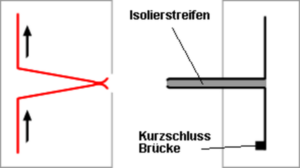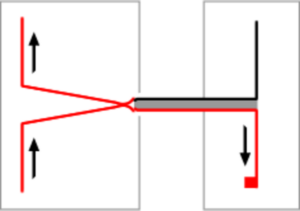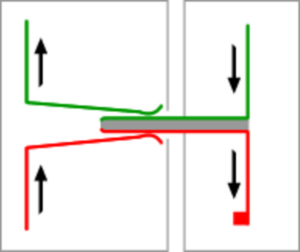The IPS is the pioneer VDE standard test interface. In its flush or surface-mount test block versions, the IPS is a solution engineered to establish safe interfacing between substation IED and components within the power grid’s system side, most notably voltage and current transformers, and breakers.
The IPS test plugs are keyed to the specific configuration of the equivalent IPS test blocks. Upon insertion into the test block, the IPS plug effectively isolates the substation devices from the system side equipment. Simultaneously, it facilitates the connection of test equipment, enabling the execution of secondary injection tests with precision and accuracy.

Closed circuit
In the resting state the IPS Test Block’s contacts are closed, signals from the system side (A-side) are connected by flat springs to the panel devices (B-side).

Current Transformers
The IPS Test Plugs and probes automatically short-circuit the secondaries of current transformers. The short-circuiting happens before the contacts are open (“make-before-break”)position.

Open Circuit, Signal Injection
To open the test block’s contacts, the IPS Test Plug is inserted into the equivalent test block. In this situation, the devices in the panel (B-side) are isolated from the system side (A-side). Signals can be injected using the banana jacks on the front side of the IPS Test Plug.
For technical documentation and product details, please reach out via email or our contact form.
Click here to connect with our team.
Other documents:
